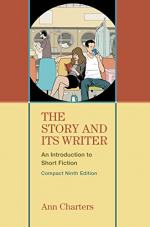|
This section contains 811 words (approx. 3 pages at 400 words per page) |

|
Point of View
This story is written in third-person omniscient perspective. Though Little Flower is the primary subject of the story, the main substance of the story involves various families and their reactions to seeing a picture of Little Flower. Furthermore, the narrator describes Marcel Pretre’s thoughts and emotions, such as his “distress” (175) when Little Flower laughs. The fact that the narrator highlights so many characters’ thoughts and beliefs proves that the narrator is omniscient. Furthermore, most of the story is in past tense. However, there is one instance in which the tense shifts to present tense. At the beginning of the story, on page 171, the present tense narration details the nature of the relationship between the Likoualas and Bantus. Lispector shifts to present tense to suggest that this relationship between the Likoualas and Bantus is an accepted truth that is still relevant after the events of...
|
This section contains 811 words (approx. 3 pages at 400 words per page) |

|




